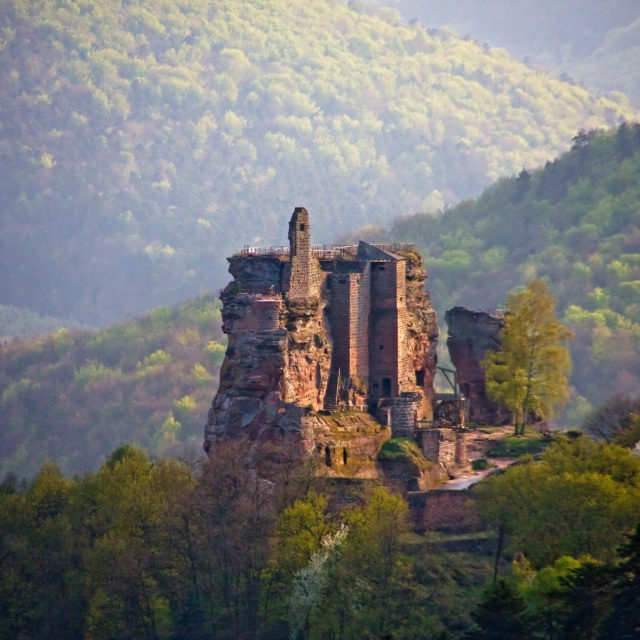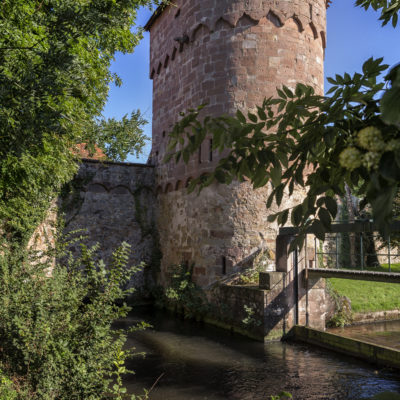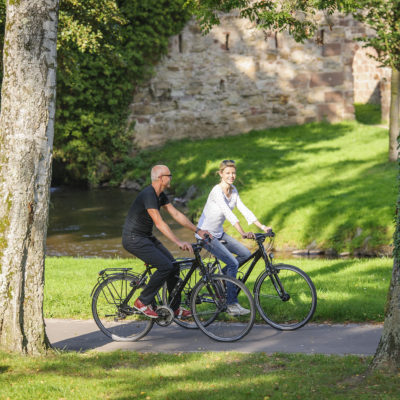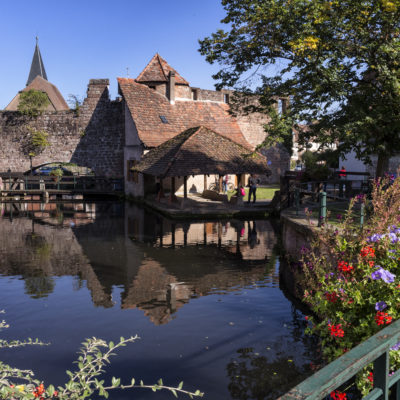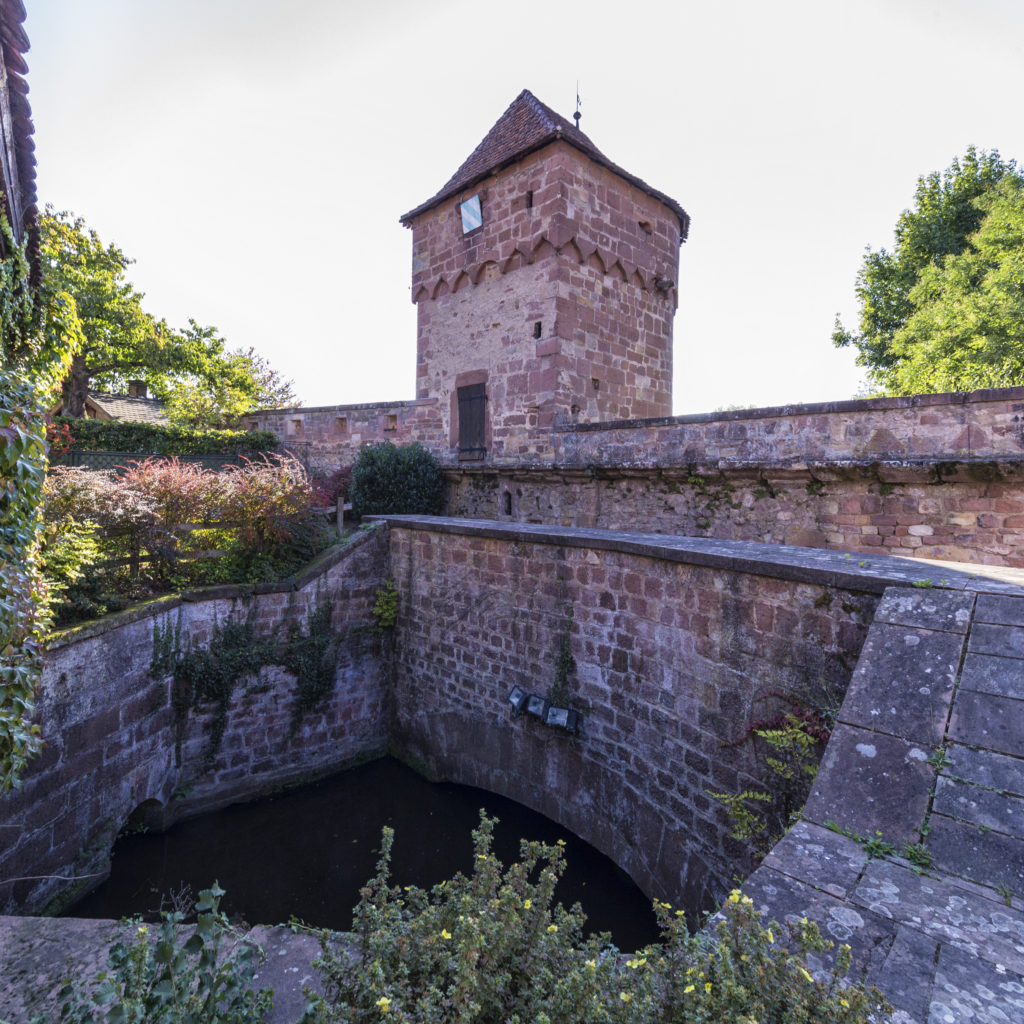
 Fortified city
Wissembourg
Fortified city
Wissembourg
Markers
In the 8th century, the Benedictine monks founded a powerful abbey and had fortifications built around the developing city. In 1354, thanks to the exceptional influence of the abbey, Wissembourg joined the free Alsatian cities of the Decapolis. In the 18th century, the city welcomed the King of Poland and his court in exile. A frontier town often pillaged and besieged, Wissembourg suffered the full force of the Franco-Germanic conflicts.
History
Wissembourg was the fief of Hans Trapp, an Alsatian bogeyman dressed in an animal skin, who made children tremble from north to south of Alsace. At the origins of the legend, the odious lord, Hans Von Trotta, was excommunicated for the torments he inflicted on the monks and the inhabitants of Wissembourg by damming the river Lauter to dry up the city, or by depriving peasants the privilege of collecting wood in his forests.
Key points
On the ramparts path, landscapes of the city, the vineyard and the forests blend together; in the city centre, the tranquillity of the banks of the Lauter rivals the gothic charm of St. Peter and St. Paul's Abbey-Church and its magnificent organ.
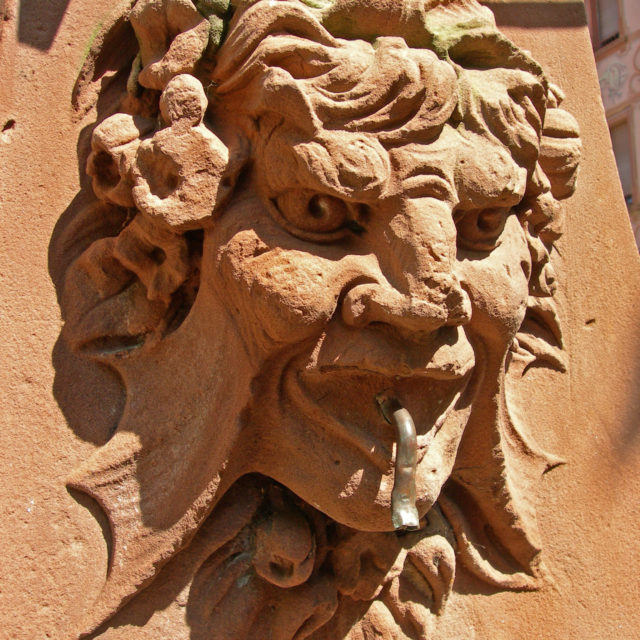
Practical informations
- Address
-
67160 Wissembourg - Nearest tourism office
- Office de tourisme du Pays de Wissembourg
9 place de la République, 67163 Wissembourg
03 88 94 10 11 - 03 88 94 18 82 - info@ot-wissembourg.fr
www.ot-wissembourg.fr - Facebook @tourismepaysdeWissembourg - GPS coordinates
- Lat.: 49.03629244 - Long.: 7.94483185
You would also like

On the Wissembourg ramparts


On the Wissembourg ramparts
Rue du général Leclerc
67160 Wissembourg
03 88 94 10 11
tourisme@alsace-verte.com
www.alsace-verte.com

From Wissembourg to Gimbelhof


From Wissembourg to Gimbelhof
67160 Wissembourg
03 88 80 89 70
tourisme@alsace-verte.com
www.alsace-verte.com
Nearby
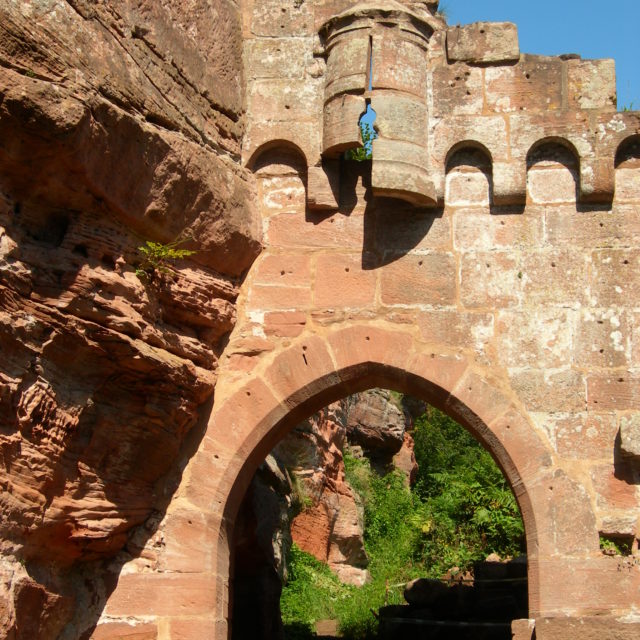
Schoeneck Castle

